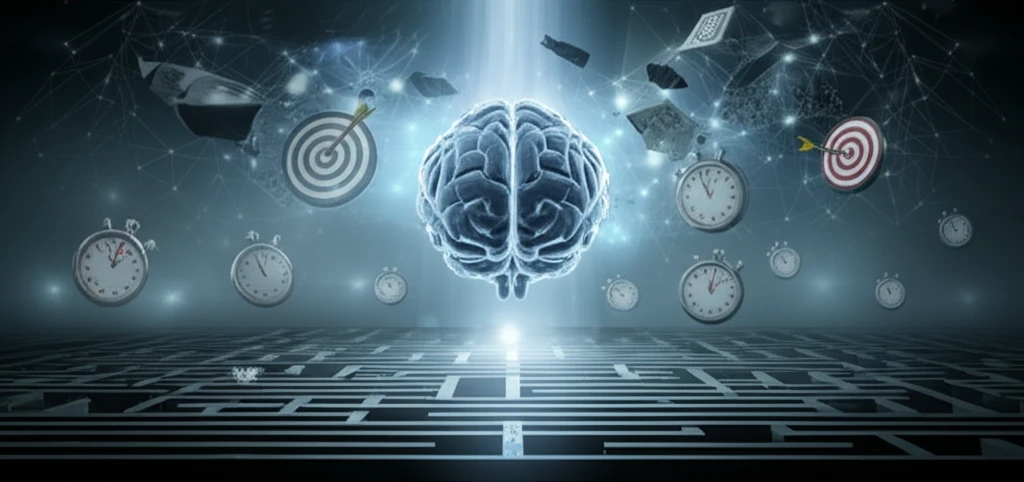
Is Your Decision-Making Style Costing You Time? The Surprising Link Between Speed, Accuracy, and Complexity
"Uncover the hidden dynamics of decision-making: when slowing down boosts performance, and why sometimes, faster is actually better."
In today's fast-paced world, we're constantly bombarded with decisions, from the mundane to the momentous. It's tempting to believe that more complex problems inherently lead to more errors, but recent research is challenging this assumption, revealing a far more nuanced interplay between decision speed, accuracy, and the perceived complexity of the task at hand.
For years, response time has been a go-to indicator of problem complexity across various fields, from economics and psychology to neuroscience. The underlying idea is simple: more complex problems demand greater cognitive effort, leading to slower decision times. However, this linear relationship is proving to be misleading. Sometimes, faster choices are more accurate, while other times, slowing down is the key to success.
Enter a groundbreaking study that re-examines this relationship, focusing on the often-overlooked role of perceived complexity. By revisiting the classic Wald model of optimal stopping, the research sheds light on a fascinating paradox: while choice quality generally improves with problem clarity, the expected decision time follows an inverse U-shaped pattern. In essence, decisions can be swift in both very simple and highly complex scenarios.
The Inverse U-Shape: Decoding the Complexity Paradox

The core of the complexity paradox lies in understanding how our brains process information. In simple situations, the optimal choice is often immediately obvious, leading to rapid decisions. However, as problems become moderately complex, our brains require more time to weigh the options, gather information, and refine our understanding, resulting in slower, more deliberate choices. But what happens when complexity spirals out of control?
- Signal-to-Noise Ratio: How clear and relevant the information is. High ratio means easier problem.
- Cost of Information: Time/effort required to gather information. Complex issues means more effort.
- Effort Control: The more effort you put in, the more progress you make.
Beyond Speed: A New Approach to Assessing Complexity
While response time can offer valuable clues, it's clear that relying solely on this metric can be misleading. The study proposes a novel method for accurately assessing problem complexity: by observing how choices change in response to small incentive distortions. The more sensitive a decision is to these subtle nudges, the more complex the underlying problem is likely to be.
